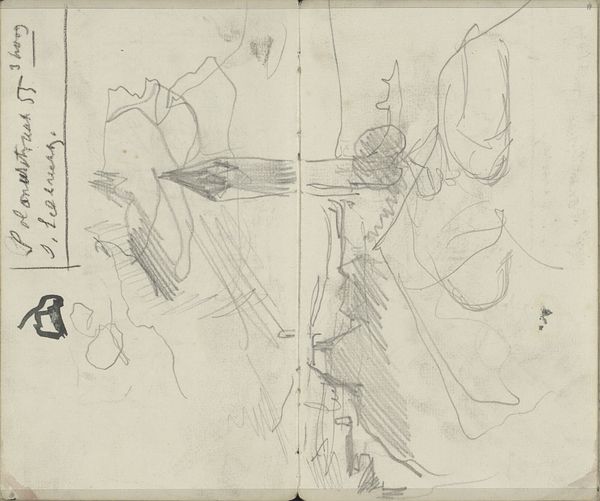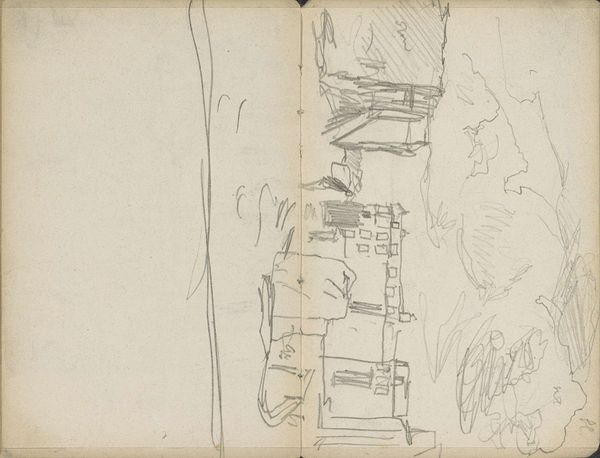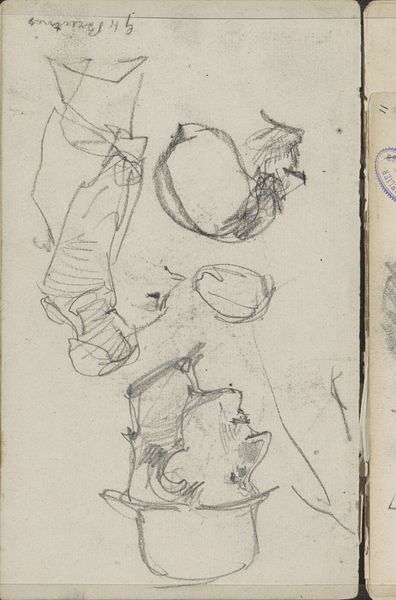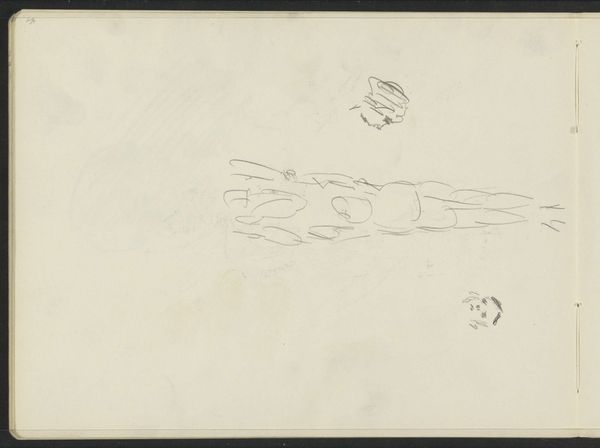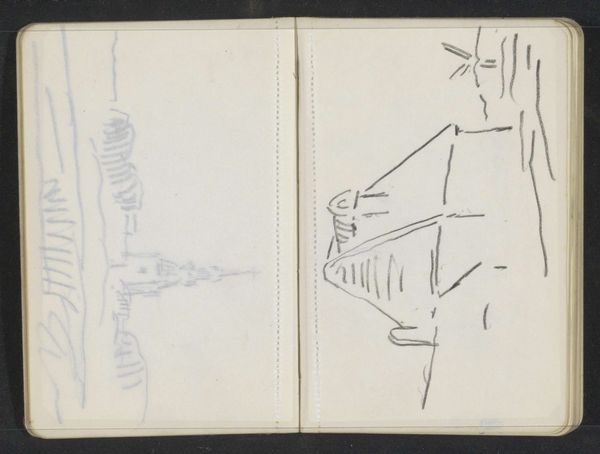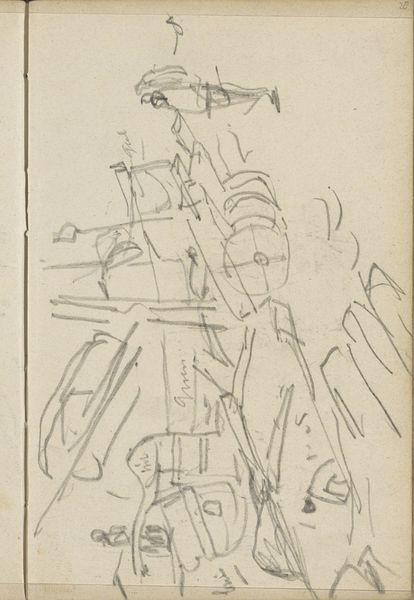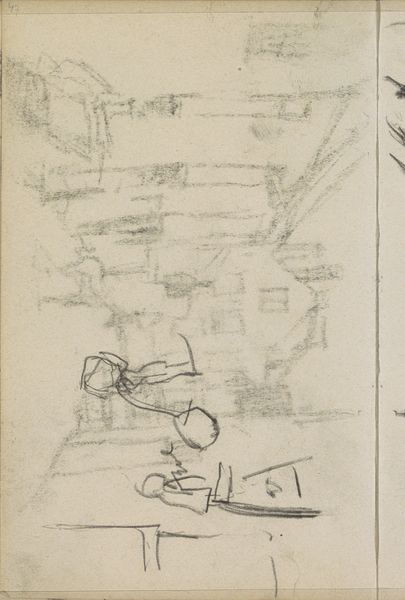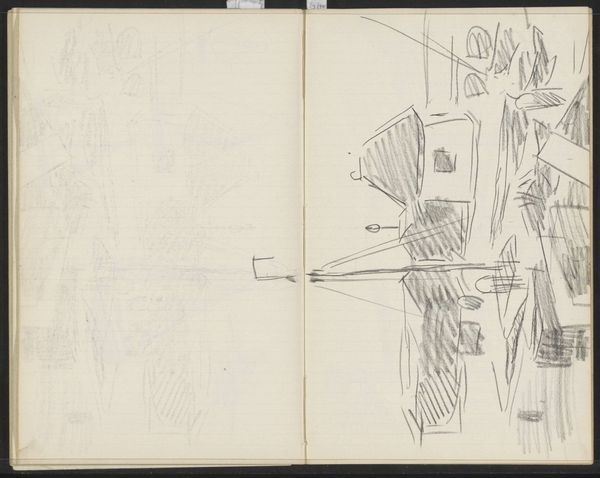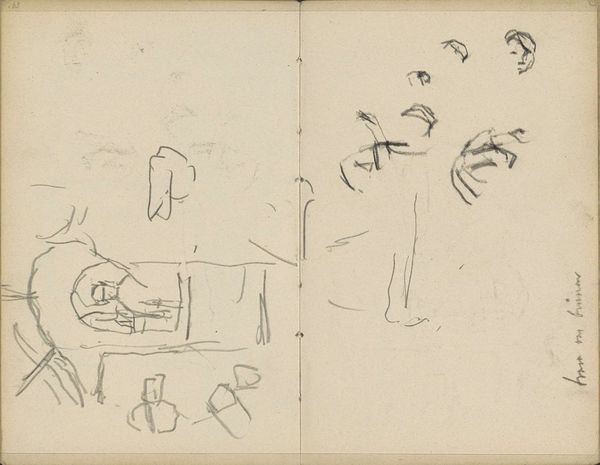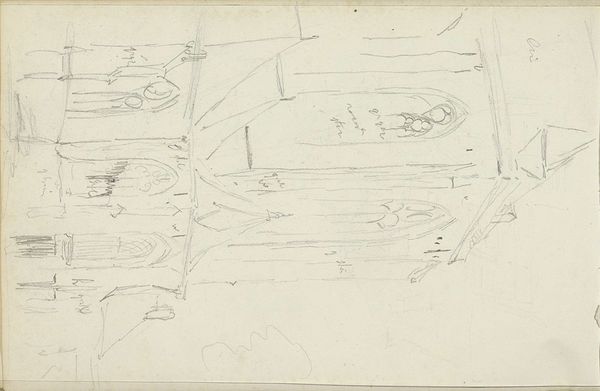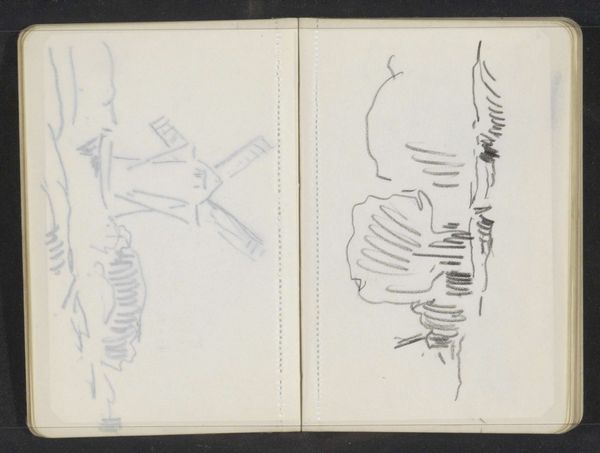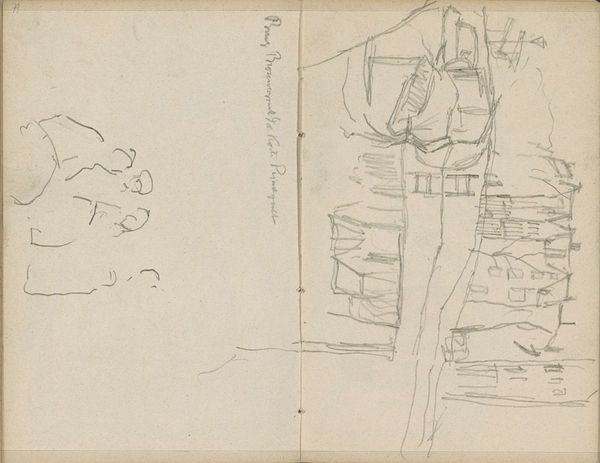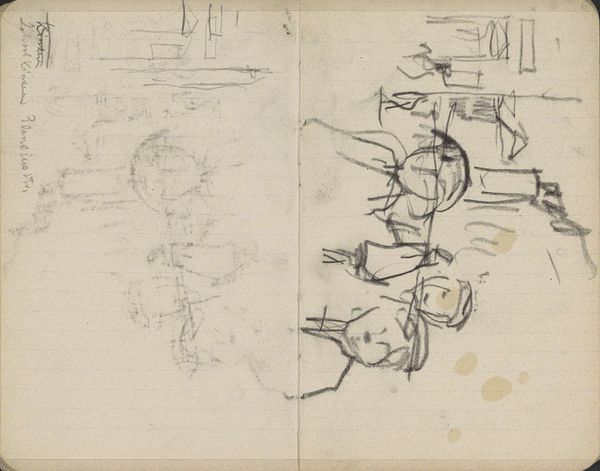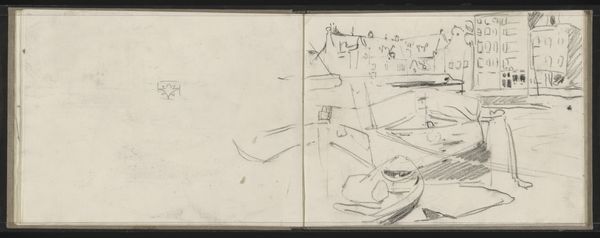
Gezicht op de Nieuwe Teertuinen en Prinseneiland te Amsterdam c. 1903
0:00
0:00
georgehendrikbreitner
Rijksmuseum
Copyright: Rijks Museum: Open Domain
Editor: This is George Hendrik Breitner’s “Gezicht op de Nieuwe Teertuinen en Prinseneiland te Amsterdam,” from around 1903. It's a drawing, pencil and maybe some ink, on toned paper. It feels like a very personal, fleeting impression of a place. What do you see in this sketch? Curator: I see the urban landscape not just as a collection of buildings, but as a kind of collective memory made visible. The rapid strokes and layered lines, they hint at the constant state of flux that defines a city. Breitner is recording a moment, yes, but it’s also a symbol of continuous change. Look how the trees on the right contrast with the buildings on the left. Do you feel a difference? Editor: Definitely. The buildings are angular and a bit claustrophobic, whereas the trees are rounder, softer… almost comforting. Curator: Exactly! The organic shapes, juxtaposed with the hard lines of the architecture, remind us that even in the most urban environments, nature persists. It's an interesting duality. And I find myself wondering what it says about the relationship between humanity and the environment at that time. What did the city represent? Was it progress? Encroachment? Editor: It’s interesting how the simple act of sketching can reveal so much about cultural values. It makes you wonder what symbols artists use today to reflect our current relationship with the urban landscape. Curator: Precisely! These sketches, seemingly casual, become potent carriers of cultural meaning over time. They offer a glimpse into the soul of a city and, by extension, into ourselves. It leaves you thinking how every mark contains a story and echoes across generations.
Comments
No comments
Be the first to comment and join the conversation on the ultimate creative platform.
